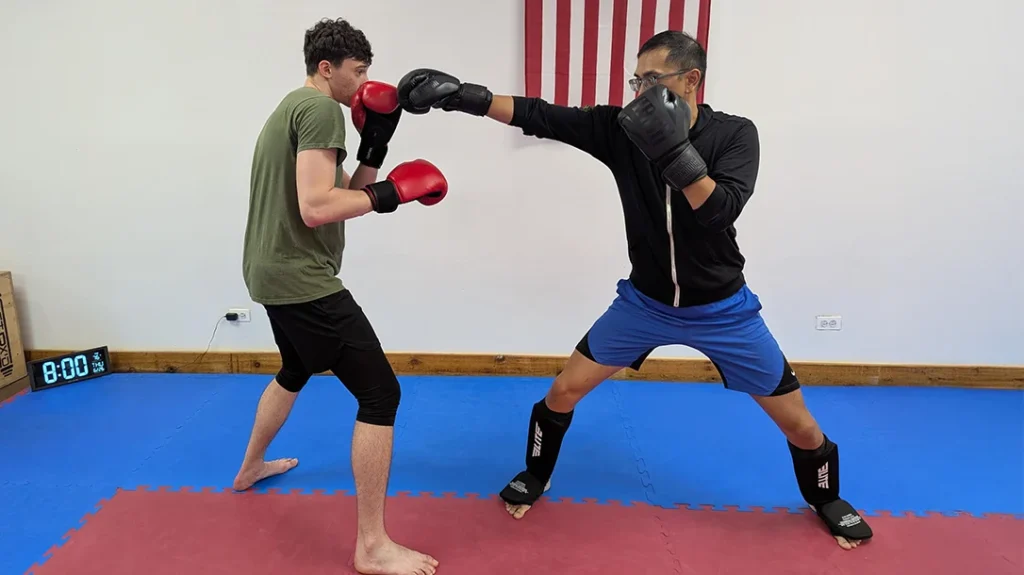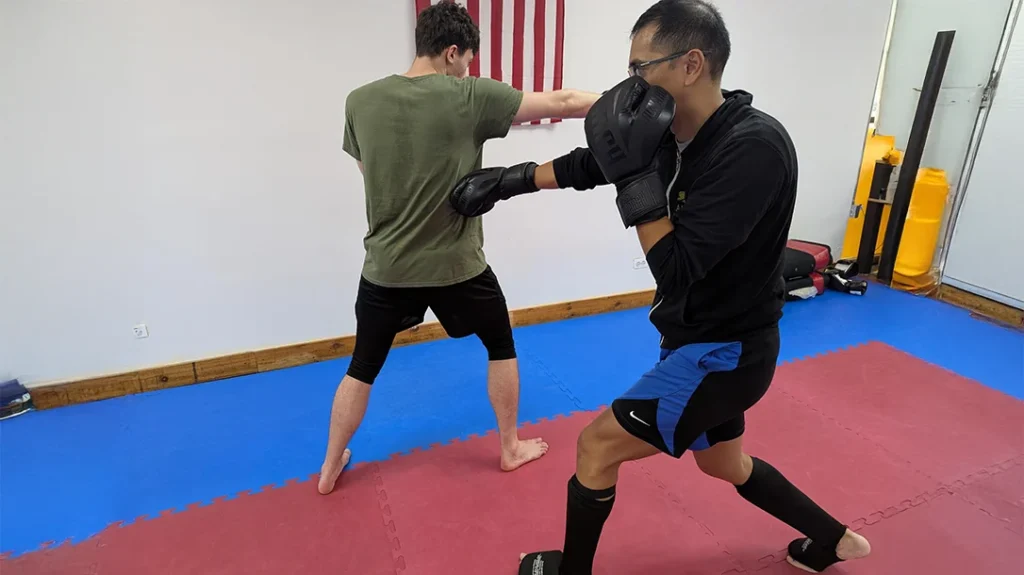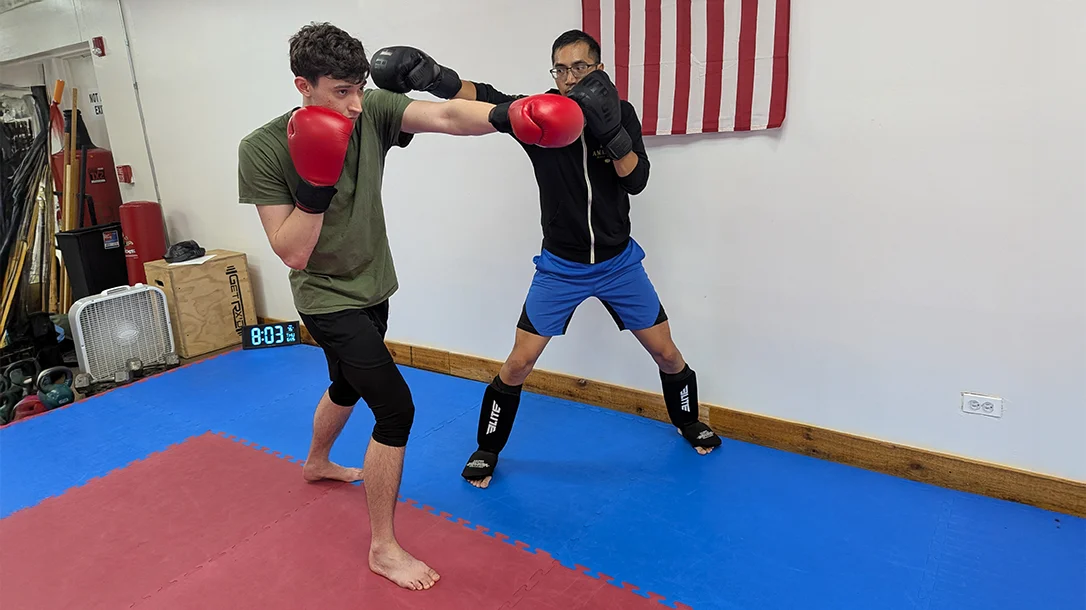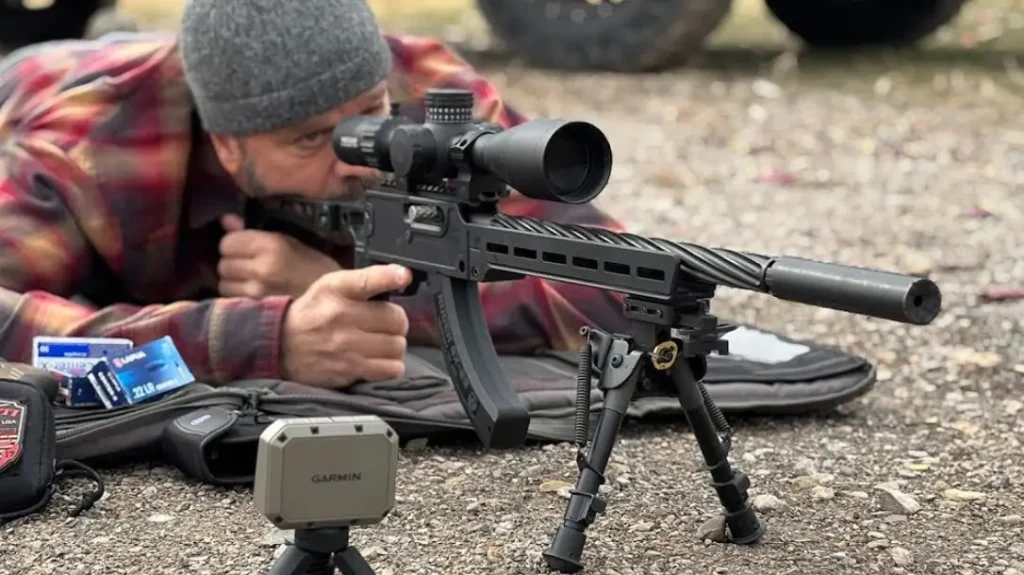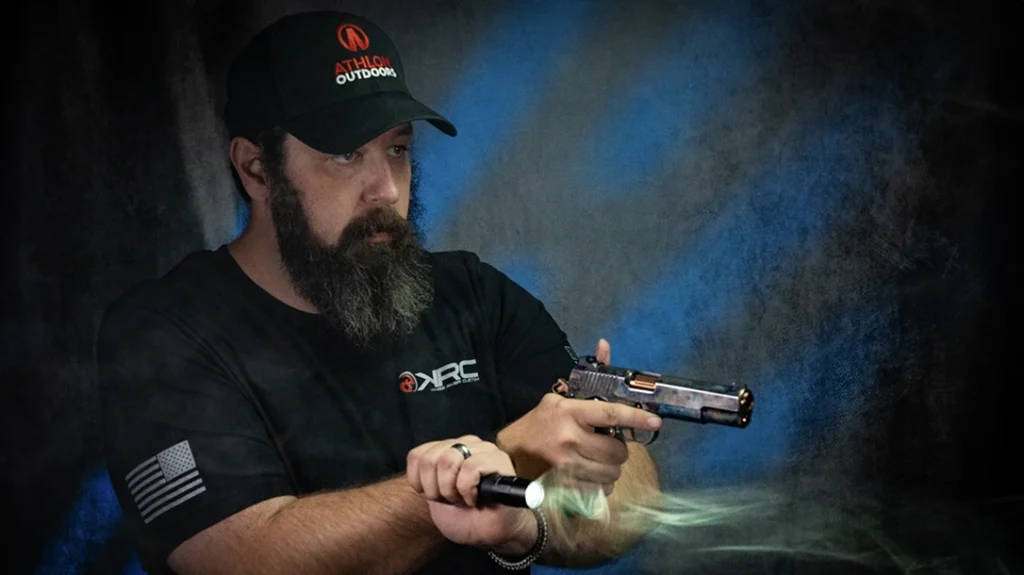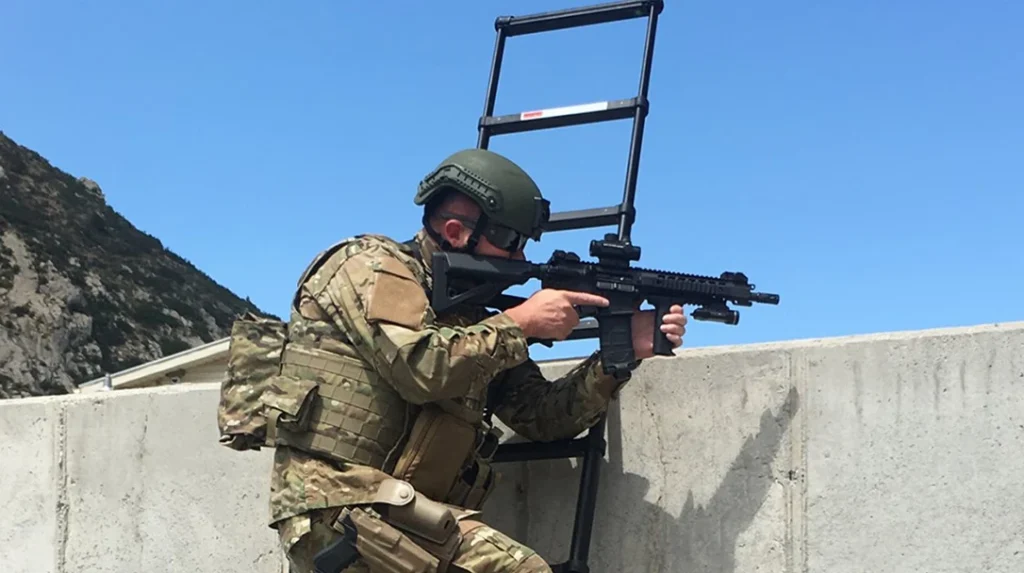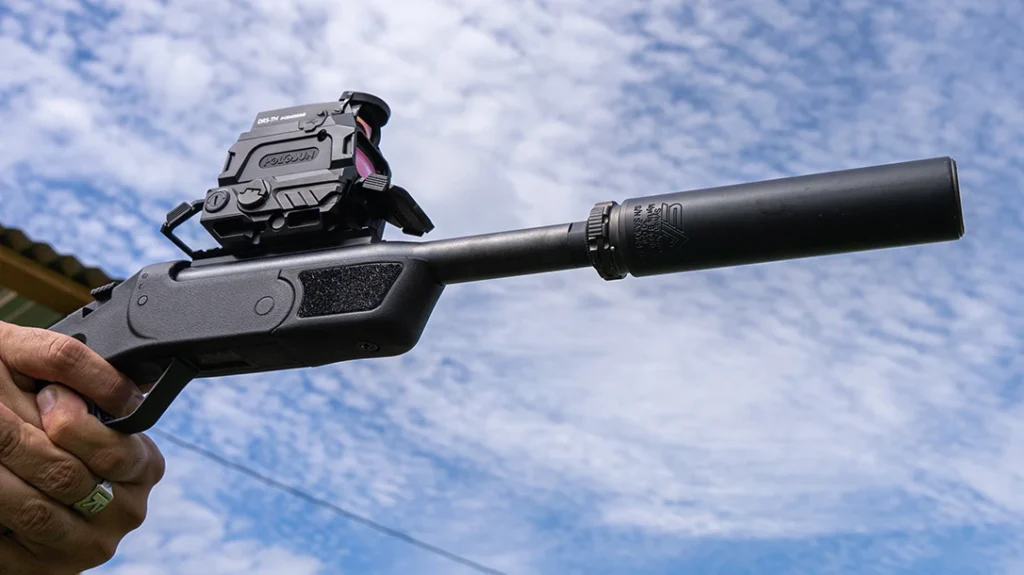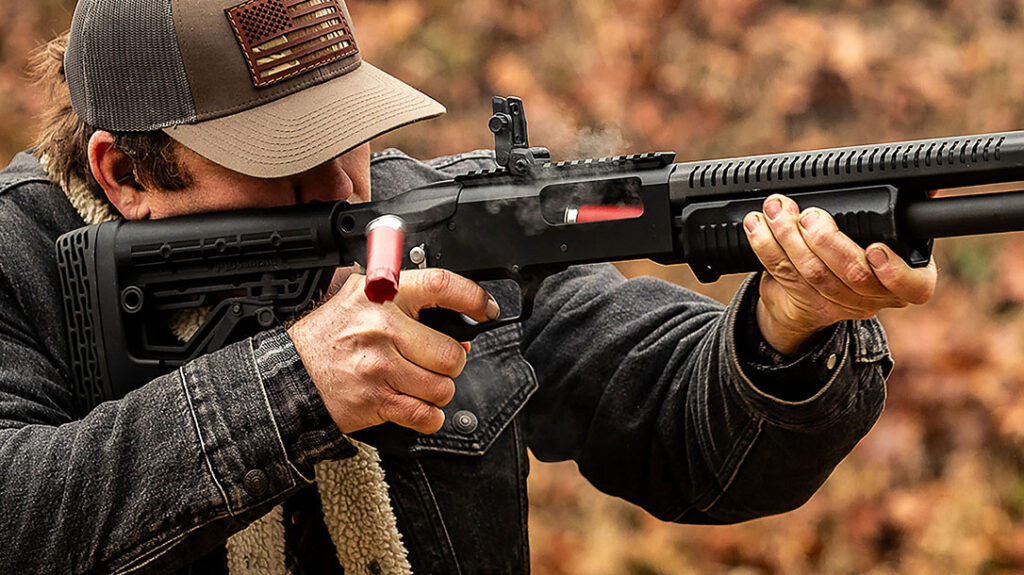True story, the more fights you get into, the greater the chance you have of getting punched in the face. I personally hate getting punched in the face, so I learned how to move. Footwork and working angles are vital to avoiding being hit during a defensive encounter.
Defensive Footwork: Keep Moving
While getting hit in a fight can be expected, I don’t need to tell anyone that it can be avoided. The fact is, you can become very hard to hit with proper head movement, angles, and footwork. It does take a lot of time and practice to get a good rhythm of movement, but once you learn how to move, you only get better.
Speed, timing, reflexes, and understanding how to control distance can only be fully achieved by sparring and working with a good coach or partner. However, this article can serve as a starting point for anyone interested in learning the finer points of movement.
Advertisement — Continue Reading Below
For those who want more, I highly recommend finding a local boxing/kickboxing/Muay Thai gym. These types of gyms offer some of the best movement that you can get.
In this article, we will discuss some basic footwork and angles, which form the foundation of a fighter’s technique.
One of the first things that all my new students learn is footwork angles. After all, movement is life. Let’s get into it.
Advertisement — Continue Reading Below
Get Off The X: Work the Angles
I teach my students to get off the X, because the “X” is for pirate booty. Don’t be pirate booty or a sitting duck.
There are many ways to learn footwork. Two of the first things to understand are the 45-degree angle and how to step forward and back. This may sound super simple to some. However, many people struggle to perform these basics when paired up in training.
Learn Not to Trip Over Your Own Feet
Learning not to hop back and forth like a bunny or trip over your own feet is important.
Advertisement — Continue Reading Below
Many athletes use agility ladder drills to develop their ability to lift their feet and move forward and backward. If you aren’t currently on an agility ladder, no worries, you can still work on your footwork and learn how to shift your weight back, forth, and in and out.
Using Simple Sticks for a Makeshift Agility Ladder

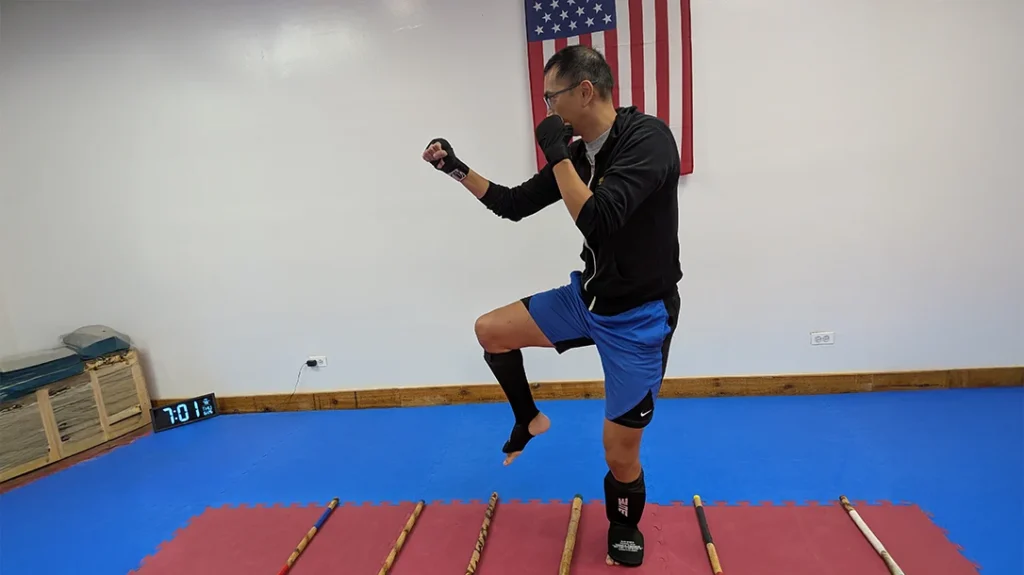
Advertisement — Continue Reading Below
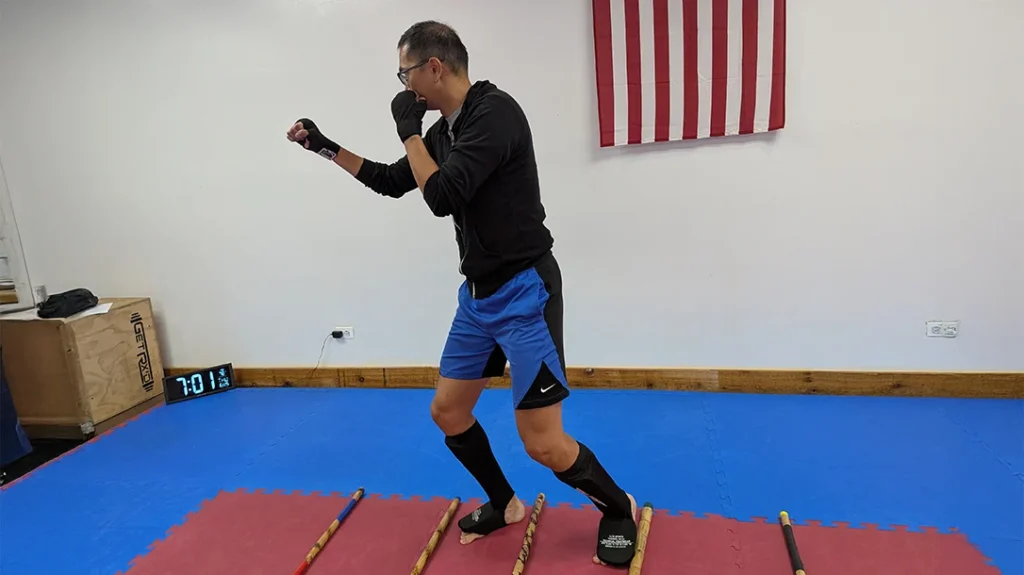
Learn The Angles with C.U.M.A. V Step
The C.U.M.A. V-STEP derives from the Filipino martial arts male/female triangle stick layout on the ground, but it is a little different. Basically, lay out two sticks in the form of a V. Your attacker would stand inside of your V or the “funnel.” Make sure that your V is always wider than your attacker’s shoulders.
The goal is to step outside and down the line of either side of your V. This will teach you to angle either outside or inside of a strike. No matter what your attacker throws, a punch or kick, the strike connecting point is going to hit at the spear-tip of the V. The spear-tip of the V is the “X,” remember, get off the X. Again, movement is life.
Advertisement — Continue Reading Below
You don’t want to walk straight into your attacker—you will just end up grappling. So, learn how to step off and down the line.
When practicing the V-STEP, “Angle 1” is always the right side and “Angle 2” is always the left side. So, if an attacker strikes with a straight right jab, that is an angle 1 strike. But you Side-step with your left foot to slip outside the jab, that is an Angle 2 V-STEP.
An Angle 1 attack can be evaded with an Angle 2 step and block. Again, attacking or defending right is always Angle 1, left is always Angle 2, simple stuff.
Advertisement — Continue Reading Below
Defending Against a Punch With a V-Step

Defending Against a Kick With a V-Step
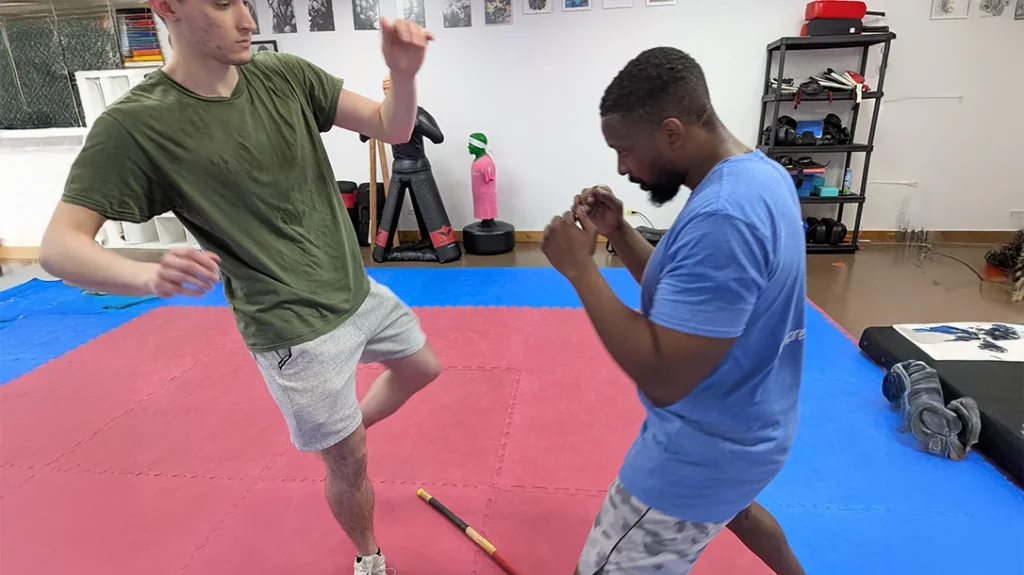
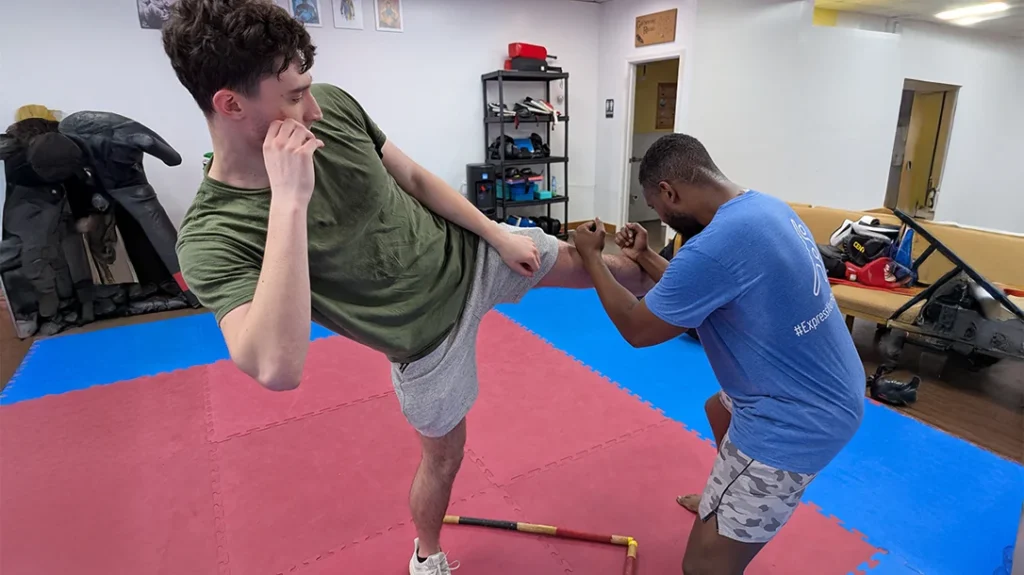
Advertisement — Continue Reading Below
The 45 Degree Diamond Angle Drill
This drill is basically connecting two “Vs” to form a diamond. This time, both the attacker and defender will be stepping with the same angles. Meaning, an ANGLE 1 strike vs. ANGLE 1 defense.
A good way to practice is when both partners step down the line, focus punching toward the center of the diamond at each other’s hand. The center of the diamond is where your attacker should be. Use your partner’s steps to help time yours.
Example
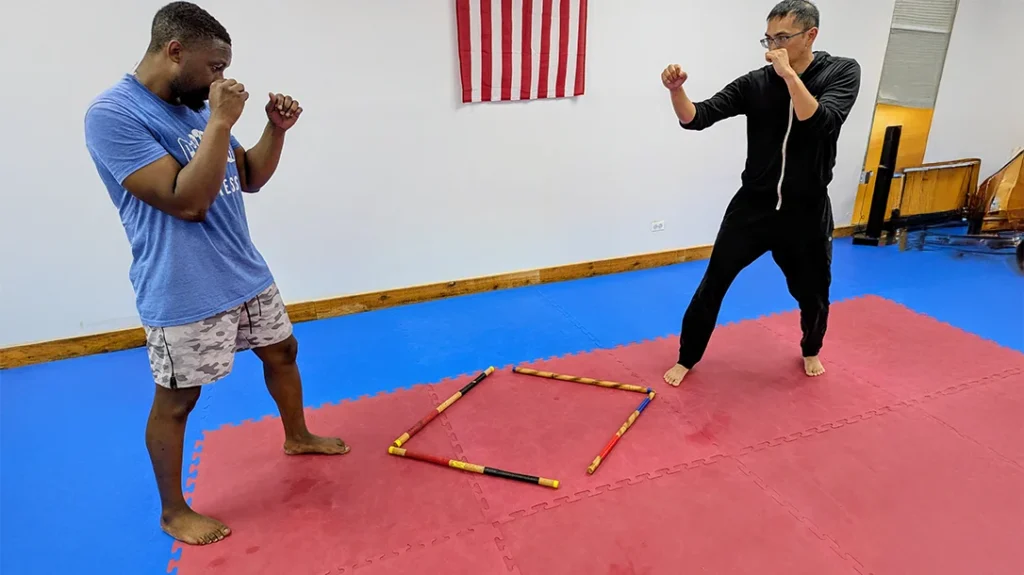
Advertisement — Continue Reading Below
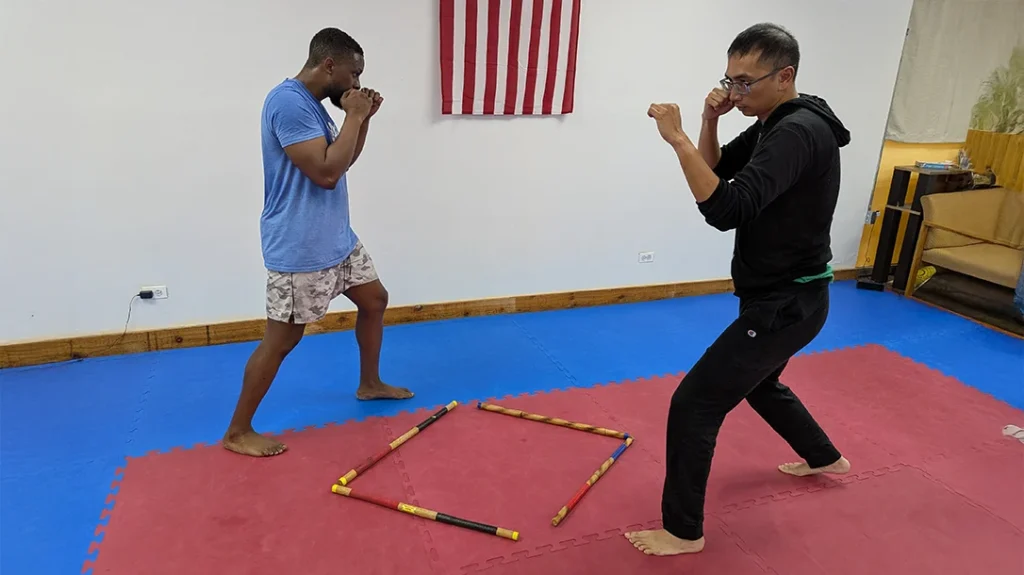
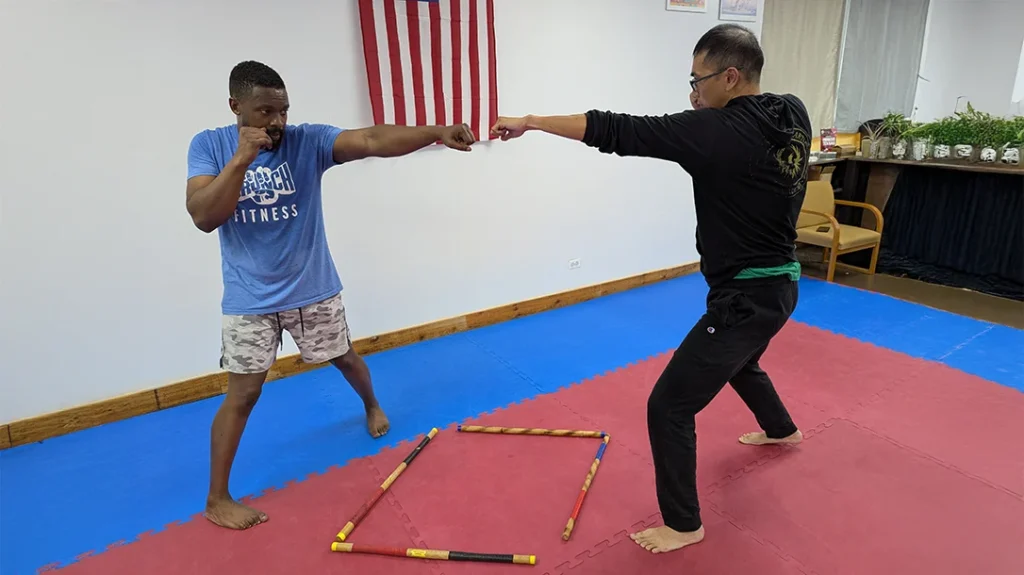
Putting All That Footwork Together
Now is the time to remove the sticks and move around freely and less statically. Keep your hands up and remember your V-STEP, envision the sticks moving to the outside of your attacker’s shoulders. Don’t forget your angles. Use your “agility ladder” footwork to advance or step back, use your C.U.M.A. V-STEP to sidestep, angle, and turn.
Start this drill solo (shadow boxing) and then follow up with a partner, simply focusing on your footwork without any striking at all. This will seem like a dance; use your footwork to practice angles and evading.
Learning how to block a punch is good. But sometimes a punch or kick slips past your block. This is when your movement is what gets you out of harm’s way.
Once you are comfortable, start testing out your strikes and counters. Learn how to step down the line to the outside of the attack. When you are done stepping outside, you should be able to see your attacker’s ear. This puts you at a superior angle; your opponent will have to spin and step out to face you.
Sometimes you have no choice but to step to the inside of an attack. There is nothing wrong with this. Just pay attention to your attacker’s opposite hand/leg for a follow-up strike. Whatever you do, keep moving. A moving target is always harder to hit.
Sidestep And Counter
